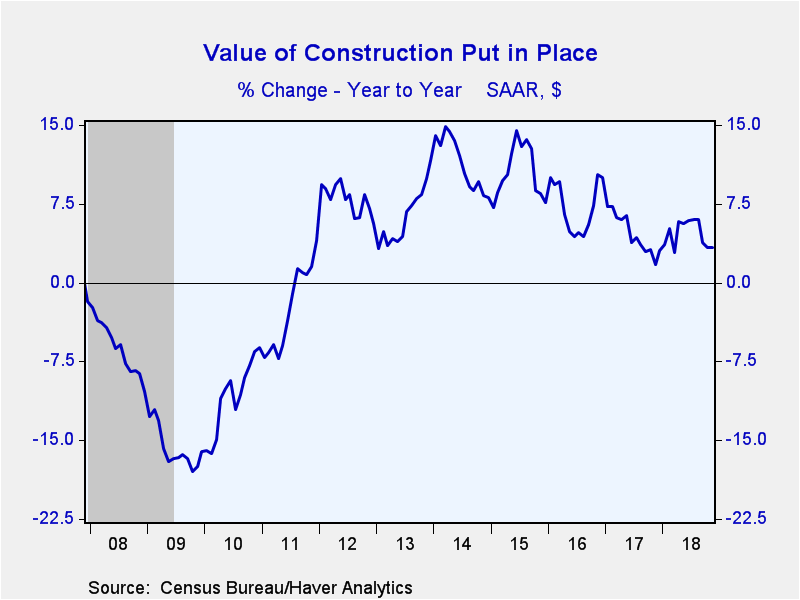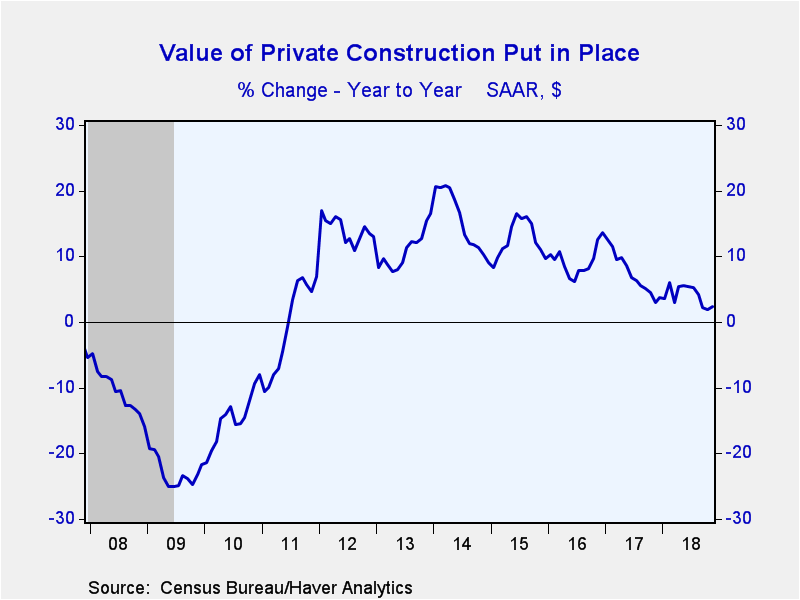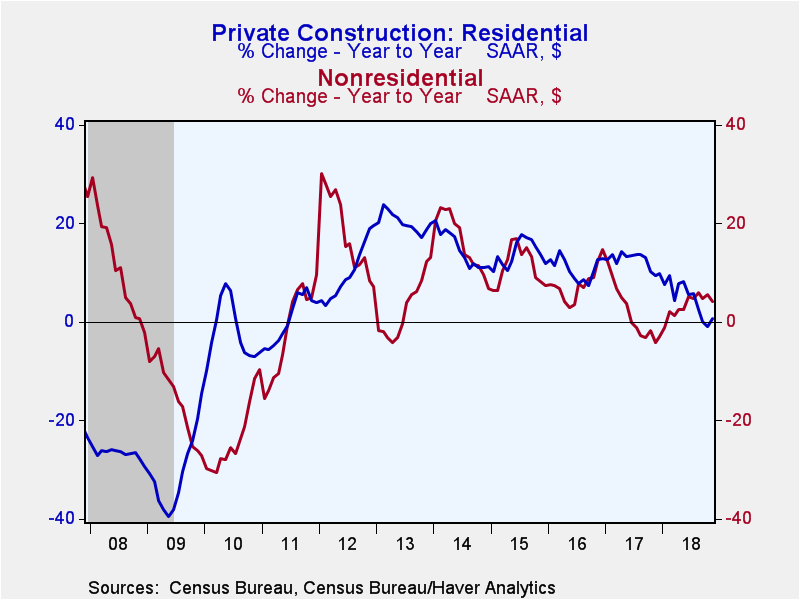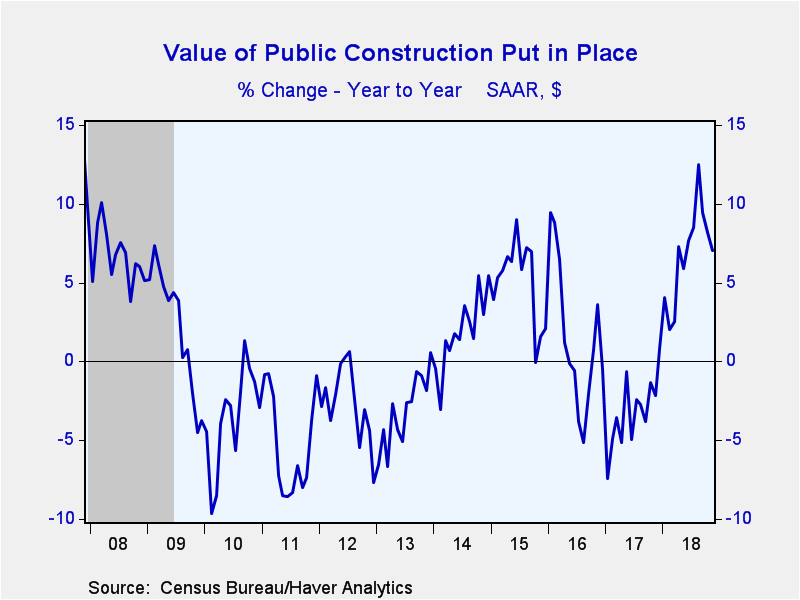 Global| Feb 01 2019
Global| Feb 01 2019U.S. Construction Spending Rises in November But Offset by September's Downward Revision
Summary
In a delayed release of November data, the value of construction put-in-place rose a greater than expected 0.8% month-on-month (3.4% year-on-year). The Action Economics Forecast Survey expected a 0.3% gain. October's previously- [...]
In a delayed release of November data, the value of construction put-in-place rose a greater than expected 0.8% month-on-month (3.4% year-on-year). The Action Economics Forecast Survey expected a 0.3% gain. October's previously-reported decline was revised to a slight increase (0.1%), while September's reading was revised substantially lower. Third quarter construction spending is now 3.6% (annualized) below its second quarter level, down from -1.4%. Thus, construction-related components of GDP – private residential investment, nonresidential structures, and potentially even government spending – are likely to be revised down in the third quarter.
This release suggests a mixed result for the fourth quarter. Given the data we have in hand, private residential and nonresidential structures outside of oil drilling looks to be a drag on GDP growth, while public construction is on track to add to growth.
The construction spending figures, some of which date back to 1946, are in Haver's USECON database. The expectations reading can be found in the AS1REPNA database.
| Construction Put in Place (SA, %) | Nov | Oct | Sep | Nov Y/Y | 2017 | 2016 | 2015 |
|---|---|---|---|---|---|---|---|
| Total | 0.8 | 0.1 | -1.8 | 3.4 | 4.5 | 7.0 | 10.7 |
| Private | 1.3 | -0.3 | -1.6 | 2.3 | 7.1 | 9.2 | 12.9 |
| Residential | 3.5 | -1.1 | -2.0 | 0.8 | 12.4 | 10.7 | 14.2 |
| Nonresidential | -1.2 | 0.6 | -1.1 | 4.2 | 1.3 | 7.7 | 11.5 |
| Public | -0.9 | 1.5 | -2.5 | 7.0 | -3.2 | 0.7 | 5.1 |
Gerald D. Cohen
AuthorMore in Author Profile »Gerald Cohen provides strategic vision and leadership of the translational economic research and policy initiatives at the Kenan Institute of Private Enterprise.
He has worked in both the public and private sectors focusing on the intersection between financial markets and economic fundamentals. He was a Senior Economist at Haver Analytics from January 2019 to February 2021. During the Obama Administration Gerald was Deputy Assistant Secretary for Macroeconomic Analysis at the U.S. Department of Treasury where he helped formulate and evaluate the impact of policy proposals on the U.S. economy. Prior to Treasury, he co-managed a global macro fund at Ziff Brothers Investments.
Gerald holds a bachelor’s of science from the Massachusetts Institute of Technology and a Ph.D. in Economics from Harvard University and is a contributing author to 30-Second Money as well as a co-author of Political Cycles and the Macroeconomy.









